
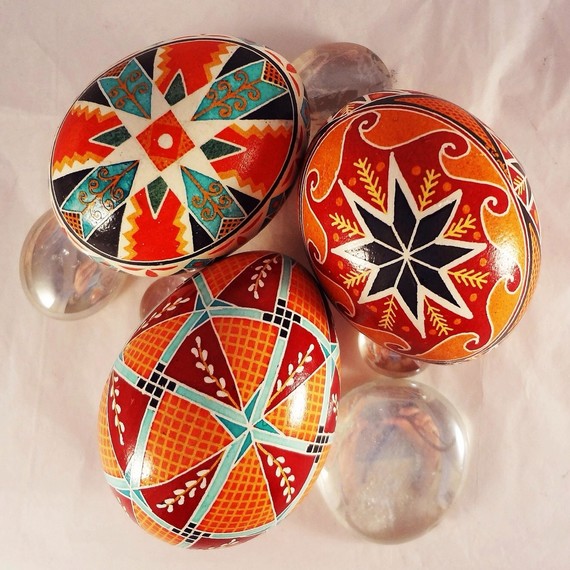
We are all familiar with the many virtues of the egg. It is incredible. It is edible! And you can draw on, hide, and eat one … all in one day!
Today, egg decorating has become more sophisticated — a lot of work goes into our decorations. In the case of pysanky, or Ukrainian Easter Eggs, they are handed down from generation to generation. So it becomes imperative we choose the best “canvas” for our artwork. And that means we need to start with an egg that is best suited for the type of art we’re creating.
Let’s take a look at the dynamics of what makes an egg a “good” egg.
You are probably familiar with white chicken eggs purchased at the grocery store, sized from small to jumbo. We call these “production eggs.” For the quick dip and dye method we often use at Easter, these eggs suffice. But for serious artists — not so much.
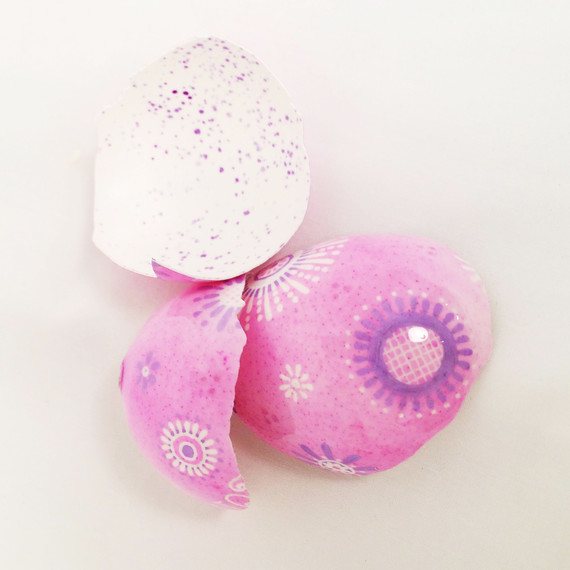
Here is a decorated egg that was a “production egg.” These eggs are produced at large hatcheries and can easily break due to stress. They also undergo detergent washes which will lead to poor dye absorption when decorating. After hours of work, this is not a good outcome! As a pysanky artist, these tragedies are what set me on a quest to find premium eggshells. So what are viable options?
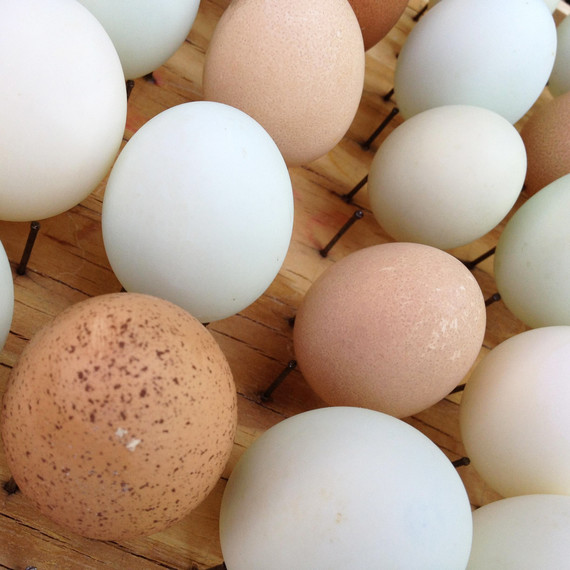
Organic eggs are best. And for true, organically “green” eggs, you can look to backyard farmers. So, how do you find a backyard farmer? Local farmers markets or “chicken swaps” are a great source for premium eggs. I find many backyard farmers are willing to supply egg artists. And although they aren’t always close to home, many are agreeable to meeting part way for an “egg drop.”
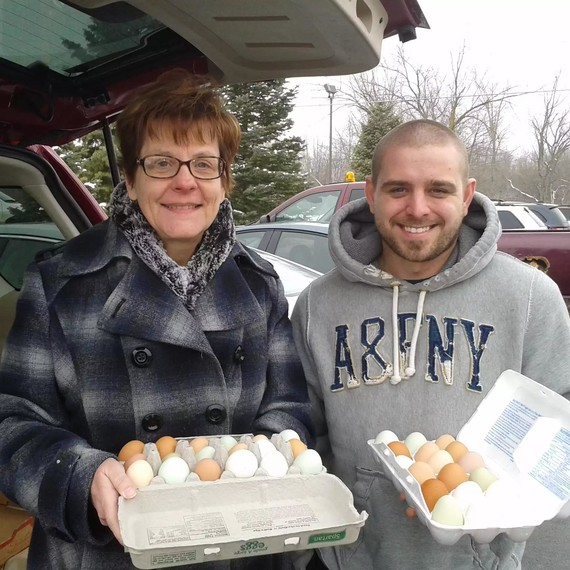
A great backyard farmer is my friend Kris Shaffer. His birds are well cared for (read: spoiled), fed properly, free ranged, and the results show: eggs from Kris’ birds are beautifully shaped with shells that are strong and smooth.
Picking a suitable eggshell is a critical learning experience for all egg artists. Pysanky artists are looking for dye quality, carvers are looking for thick shells. But shell texture also plays an important role in egg decoration, because who likes to draw on a bumpy egg?
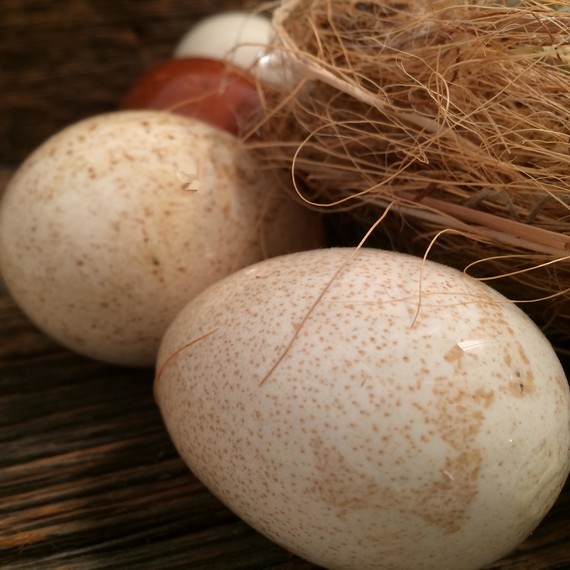
Did you know that an eggshell contains over 7,500 pores? That is very much like our own skin — it’s a permeable barrier that can absorb elements. But, Mother Nature provides eggs with their own “raincoat.” When a hen lays an egg, a protective membrane called a “cuticle” covers the outside of the shell. It is often referred to as the “bloom” and it protects against bacteria. It can also affect dye quality; either good or bad, dependant on the egg. One way to remedy this is to give the egg a good wash.
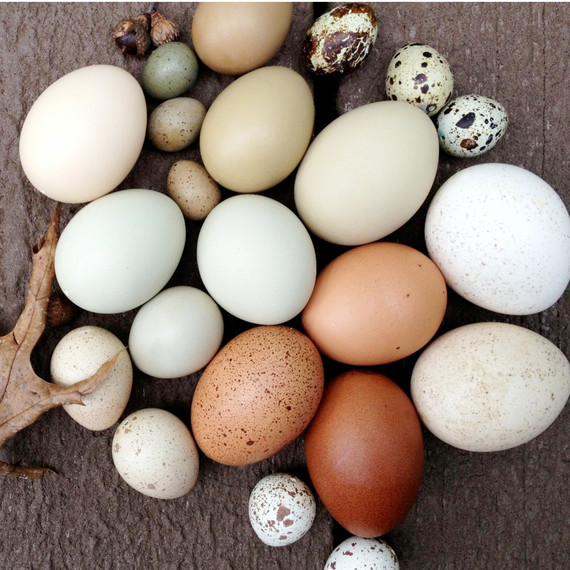
With all these finicky obstacles, why decorate them at all? Some of the most beautiful art is provided by Mother Nature. Combined in jars, baskets, or bowls, eggs add a touch of soft color and a natural variance to decorating. Eggs are long, fat, short, round, pointy and sometimes speckled, too! Eggs arenaturally laid in many different colors — blue, green, ivory, peach to pink, and copper to chocolate. Even olive green green eggs are available. And the blue/grey we call “duck egg blue” is super popular in home decor. They just all come that way…straight from the chicken’s…well, you know.
You can combine different sizes, types, and colors of eggs to create an awesome centerpiece for your spring table. How about a set of naturally pastel-colored eggs for your Easter display?
Place them in a vintage paper mâché egg form, large antique egg cup, or apothecary jars.
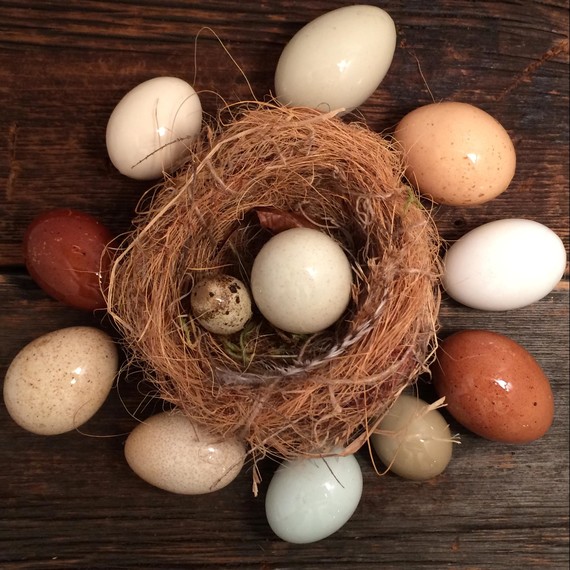
You can also try displaying them in handmade nests. Just remember: never take eggs or nests from the wild. Even abandoned nests will be reused by our feathered friends.
A combination of quail, duck, turkey and chicken in a handmade nest makes a stunning decoration with a minimum of fuss. For a maximum wow factor, consider glazing your eggs to give them a glossy finish. You’ll get lots ohhhs and ahhhs! Leave stress behind and let Mother Nature help you “decorate” eggs this year.
Photography by Gail and Dennis Lambka.